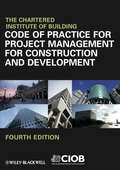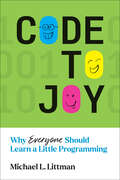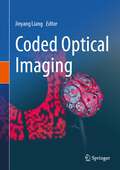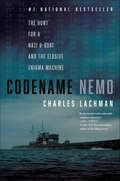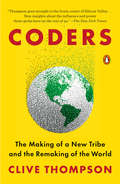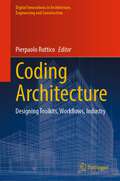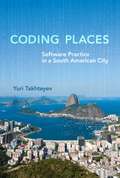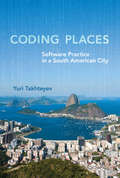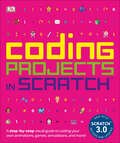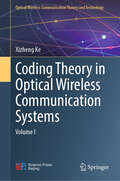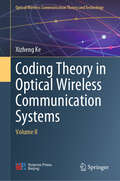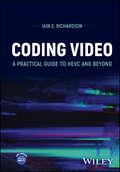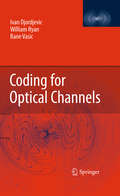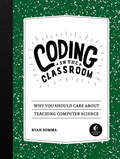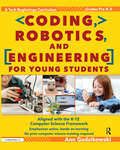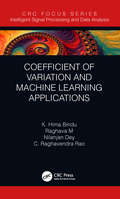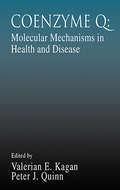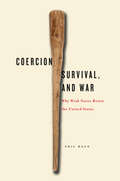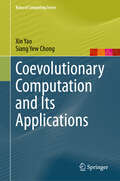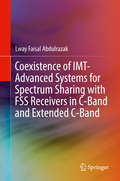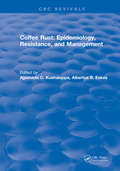- Table View
- List View
Code of Practice for Project Management for Construction and Development
by Chartered Institute of BuildingIn 1991 the Chartered Institute of Building initiated a multi-institute task force and a Code of Practice for Project Management for Construction and Development was published in 1992, with second and third editions in 1996 and 2002. Like previous editions, this fourth edition has been extensively updated. The fourth edition includes a range of new illustrations and high profile examples, and features new guidance on: CDM regulations Project planning Change management Project management software Mobile technology The range of procurement options The European perspective Contracts Effective project management involves the assessment and management of risk, and this is a strong theme throughout the Code. The Code of Practice provides an authoritative guide to the principles and practice of construction project management. It will be a key reference source for clients, contractors and professionals, irrespective of the size and nature of the project.
Code of Practice for Project Management for the Built Environment
by CIOB (The Chartered Institute of Building)The latest edition of the gold standard in construction project management references In the newly revised sixth edition of Code of Practice for Project Management for Construction and Development, the Chartered Institute of Building delivers an up-to-date and comprehensive reference to the principles and practice of project management in construction and development. This latest edition covers the new technologies, internationalisation, changing legislation, and productivity and profitability challenges faced by contractors that are driving significant change in the industry. The book demonstrates the application of systematic documentation and quality control to complex construction projects and offers specimen forms, checklists, and documentation that link key principles to practical project management. It is worldwide in scope and widely recognised as the industry standard on the subject. With fresh discussions of quality assurance, global codes and standards, time management, joint ventures, contract compliance, supply chain integration, design digitisation, and much more, the Code of Practice for Project Management for Construction and Development also includes: A thorough introduction to project inception, feasibility analysis, strategy, and the pre-construction process Comprehensive explorations of the construction stage of projects, as well as testing and commissioning, and project completion, handover, and operation Practical discussions of post-completion review A complete glossary and index of essential terms in construction project management Perfect for project management professionals in construction contracting and client organisations, Code of Practice for Project Management for Construction and Development will also earn a place in the libraries of undergraduate and postgraduate students of project management and construction-related subjects.
Code to Joy: Why Everyone Should Learn a Little Programming
by Michael L. LittmanHow we can get more joy from our machines by telling them what our hearts desire.In this informative, accessible, and very funny book, Michael L. Littman inspires readers to learn how to tell machines what to do for us. Rather than give in to the fear that computers will steal our jobs, spy on us and control what we buy and whom we vote for, we can improve our relationship with them just by learning basic programming skills. Our devices will help us, Littman writes, if we can say what we want in a way they can understand.Each chapter of the book focuses on a particular element of what can be said, providing examples of how we use similar communication in our daily interactions with people. Littman offers ways readers can experiment with these ideas right away, using publicly available systems that might also make us more productive as a welcome side effect. Each chapter also reflects on how the use of these programming components can be expedited by machine learning. With humor and teacherly guidance, Code to Joy brings into view a future where programming is like reading—something everyone can learn.
Coded Optical Imaging
by Jinyang LiangThis book provides a comprehensive survey of coded optical imaging. Illustrated with 386 figures, it takes readers from the fundamental concepts and theories to the latest research and applications in this field. It can be used in graduate-level courses in optics and photonics. It can also benefit scientists and engineers in optical imaging, computer graphics, and other related disciplines. This book starts from a brief history of coded optical imaging and key operations in its data acquisition and image reconstruction. It then presents the latest progress in technological development and applications in the areas of biomedicine, materials science, industrial inspection, optical physics, imaging science, information theory, and more. Chapters describe the most representative techniques, exposing readers to key research themes, including: · Optical signal encoding · Image reconstruction techniques · Compressed sensing · Artificial intelligence · Metasurface · Structured light · Lensless imaging · Holography · Tomography · Light-field imaging · Utrafast imaging · Hyperspectral imaging · Polarization imaging · Super-resolution imaging
Codename Nemo: The Hunt for a Nazi U-Boat and the Elusive Enigma Machine
by Charles LachmanThe white-knuckled saga of a maverick captain, nine courageous sailors, and a US Navy task force who achieved the impossible on June 4, 1944--capturing Nazi submarine U-505, its crew, technology, encryption codes, and an Enigma cipher machine. Two days before D-Day--the course of World War II was forever changed. The hunters of the Atlantic Ocean had become the hunted, and US antisubmarine Task Group 22.3 seized a Nazi U-boat, its crew, and all its secrets. Led by a nine-man boarding party and Captain Daniel Gallery, "Operation Nemo" was the first seizure of an enemy warship in battle since the War of 1812, a victory that shortened the duration of the war. But at any moment, the mission could have ended in disaster. Charles Lachman tells this thrilling cat-and-mouse game through the eyes of the men on both sides of Operation Nemo--German U-boaters and American heroes like Lieutenant Albert David ("Mustang"), who led the boarding party that took control of U-505 and became the only sailor to be awarded the Medal of Honor in the Battle of the Atlantic. Three thousand American sailors participated in this extraordinary adventure; nine ordinary American men channeling extraordinary skill and bravery finished the job; and then--like everyone involved--breathed not a word of it until the war was over. In Berlin, the German Kriegsmarine assumed that U-505 had been blown to bits by depth charges, with all hands lost at sea. They were unaware that the U-boat, its Enigma machine, and its Nazi coded messages were now in American hands. They were also unaware that the 59 German sailors captured on the high seas were imprisoned in a POW camp in Ruston, Louisiana, until their release in 1946. A deeply researched, fast-paced World War II narrative for the ages, Charles Lachman's Codename Nemo traces every step of this historic pursuit on the deadly seas.
Coders: The Making of a New Tribe and the Remaking of the World
by Clive ThompsonHello, world.Facebook's algorithms shaping the news. Self-driving cars roaming the streets. Revolution on Twitter and romance on Tinder. We live in a world constructed of code--and coders are the ones who built it for us. From acclaimed tech writer Clive Thompson comes a brilliant anthropological reckoning with the most powerful tribe in the world today, computer programmers, in a book that interrogates who they are, how they think, what qualifies as greatness in their world, and what should give us pause. They are the most quietly influential people on the planet, and Coders shines a light on their culture.In pop culture and media, the people who create the code that rules our world are regularly portrayed in hackneyed, simplified terms, as ciphers in hoodies. Thompson goes far deeper, dramatizing the psychology of the invisible architects of the culture, exploring their passions and their values, as well as their messy history. In nuanced portraits, Coders takes us close to some of the great programmers of our time, including the creators of Facebook's News Feed, Instagram, Google's cutting-edge AI, and more. Speaking to everyone from revered "10X" elites to neophytes, back-end engineers and front-end designers, Thompson explores the distinctive psychology of this vocation--which combines a love of logic, an obsession with efficiency, the joy of puzzle-solving, and a superhuman tolerance for mind-bending frustration. Along the way, Coders thoughtfully ponders the morality and politics of code, including its implications for civic life and the economy. Programmers shape our everyday behavior: When they make something easy to do, we do more of it. When they make it hard or impossible, we do less of it. Thompson wrestles with the major controversies of our era, from the "disruption" fetish of Silicon Valley to the struggle for inclusion by marginalized groups.In his accessible, erudite style, Thompson unpacks the surprising history of the field, beginning with the first coders -- brilliant and pioneering women, who, despite crafting some of the earliest personal computers and programming languages, were later written out of history. Coders introduces modern crypto-hackers fighting for your privacy, AI engineers building eerie new forms of machine cognition, teenage girls losing sleep at 24/7 hackathons, and unemployed Kentucky coal-miners learning a new career. At the same time, the book deftly illustrates how programming has become a marvelous new art form--a source of delight and creativity, not merely danger. To get as close to his subject as possible, Thompson picks up the thread of his own long-abandoned coding skills as he reckons, in his signature, highly personal style, with what superb programming looks like. To understand the world today, we need to understand code and its consequences. With Coders, Thompson gives a definitive look into the heart of the machine.
Coding Architecture: Designing Toolkits, Workflows, Industry (Digital Innovations in Architecture, Engineering and Construction)
by Pierpaolo RutticoThis book provides a clear picture of how computational processes are gradually permeating and innovating the Architecture, Engineering, and Construction sector, contributing to sustainability and aesthetic evolution. It achieves that by gathering a collection of accounts shared by pioneering professionals involved in this innovation, drawing from recent academic studies, ongoing experimental processes conducted in cutting-edge architectural and engineering offices, as well as innovative industrial applications. The covered subjects span a wide range, including artificial intelligence and robotic manufacturing, the metaverse and 3D printing, strategies to counter CO2 consumption through plug-ins, as well as emerging materials and construction techniques. The chapters feature authors who are pioneers and embrace roles like software developers, architects, process engineers, academics, and forward-thinking entrepreneurs. They represent authoritative references within a broader interconnected cultural and technological system; an eclectic system that finds in computational processes the key to addressing the new challenges of contemporary architecture.
Coding Places
by Yuri TakhteyevSoftware development would seem to be a quintessential example of today's Internet-enabled "knowledge work"--a global profession not bound by the constraints of geography. In Coding Places, Yuri Takhteyev looks at the work of software developers who inhabit two contexts: a geographical area--in this case, greater Rio de Janeiro--and a "world of practice," a global system of activities linked by shared meanings and joint practice. The work of the Brazilian developers, Takhteyev discovers, reveals a paradox of the world of software: it is both diffuse and sharply centralized. The world of software revolves around a handful of places--in particular, the San Francisco Bay area--that exercise substantial control over both the material and cultural elements of software production. Takhteyev shows how in this context Brazilian software developers work to find their place in the world of software and to bring its benefits to their city. Takhteyev's study closely examines Lua, an open source programming language developed in Rio but used in such internationally popular products as World of Warcraft and Angry Birds. He shows that Lua had to be separated from its local origins on the periphery in order to achieve success abroad. The developers, Portuguese speakers, used English in much of their work on Lua. By bringing to light the work that peripheral practitioners must do to give software its seeming universality, Takhteyev offers a revealing perspective on the not-so-flat world of globalization.
Coding Places: Software Practice in a South American City (Acting with Technology)
by Yuri TakhteyevAn examination of software practice in Brazil that reveals both the globalization and the localization of software development.Software development would seem to be a quintessential example of today's Internet-enabled “knowledge work”—a global profession not bound by the constraints of geography. In Coding Places, Yuri Takhteyev looks at the work of software developers who inhabit two contexts: a geographical area—in this case, greater Rio de Janeiro—and a “world of practice,” a global system of activities linked by shared meanings and joint practice. The work of the Brazilian developers, Takhteyev discovers, reveals a paradox of the world of software: it is both diffuse and sharply centralized. The world of software revolves around a handful of places—in particular, the San Francisco Bay area—that exercise substantial control over both the material and cultural elements of software production. Takhteyev shows how in this context Brazilian software developers work to find their place in the world of software and to bring its benefits to their city.Takhteyev's study closely examines Lua, an open source programming language developed in Rio but used in such internationally popular products as World of Warcraft and Angry Birds. He shows that Lua had to be separated from its local origins on the periphery in order to achieve success abroad. The developers, Portuguese speakers, used English in much of their work on Lua. By bringing to light the work that peripheral practitioners must do to give software its seeming universality, Takhteyev offers a revealing perspective on the not-so-flat world of globalization.
Coding Projects in Scratch: A Step-by-Step Visual Guide to Coding Your Own Animations, Games, Simulations, a (DK Help Your Kids)
by Jon WoodcockA perfect introduction to coding for young minds! This updated step-by-step visual guide teaches children to create their own projects using Scratch 3.0.Suitable for complete beginners, this educational book for kids gives readers a solid understanding of programming. Teach them to create their own projects from scratch, preparing them for more complex programming languages like Python.Techy kids will familiarize themselves with Scratch 3.0 using this beginner's guide to scratch coding. Difficult coding concepts become fun and easy to understand, as budding programmers build their own projects using the latest release of the world's most popular programming language for beginners.Make a Dino Dance Party or create your own electronic birthday cards for friends and family. Build games, simulations, and mind-bending graphics as you discover the awesome things computer programmers can do with Scratch 3.0. This second edition of Coding Projects in Scratch uses a visual step-by-step approach to split complicated code into manageable, easy-to-digest chunks. Even the most impressive projects become possible. This book is an impressive guide that is perfect for anyone who wants to learn to code. Follow Simple Steps, Improve Your Skills & Share Your Creations!Follow the simple steps to become an expert coder using the latest version of the popular programming language Scratch 3.0 in this new edition. Create mind-bending illusions, crazy animations, and interactive artwork with this amazing collection of Scratch projects. Suitable for beginners and experts alike, this fabulous introduction to programming for kids has everything you need to learn how to code. You'll improve your coding skills and learn to create and customize your own projects, then you can share your games online and challenge friends and family to beat each other's scores! What's inside this kids' coding book? - Simulations, mind-benders, music, and sounds- Algorithms, virtual snow, and interactive features- Different devices, operating systems, programming languages and moreComputer coding teaches kids how to think creatively, work collaboratively, and reason systematically, and is quickly becoming a necessary and sought-after skill. DK's computer coding books for kids are full of fun exercises with step-by-step guidance, making them the perfect introductory tools for building vital skills in computer programming. Coding Projects in Scratch is one of three brilliant coding books for kids. Add Coding Games in Scratch and Coding Projects in Python to your collection.
Coding Theory in Optical Wireless Communication Systems: Volume I (Optical Wireless Communication Theory and Technology)
by Xizheng KeThis book focuses on optical-wireless communication systems. It summarizes the author's optical-wireless communication coding work while carrying out pertinent scientific research programs. The primary topics covered in the book are channel coding, coding modulation, error control (channel coding), and channel equalization. The author's mathematical analysis and experimental studies on the key theoretical issues are discussed in the book. One of the book's outstanding aspects is its thorough and methodical discussion of practical optical-wireless communication challenges. This makes the book especially appealing to readers who are eager to learn about applicable solutions in this area. Researchers, engineers, and graduate students in the subject of telecommunications can all profit from the book. It is appropriate for senior undergraduates, lecturers at colleges and universities, graduate students, and engineering and technical workers involved in optical communication.
Coding Theory in Optical Wireless Communication Systems: Volume II (Optical Wireless Communication Theory and Technology)
by Xizheng KeThis book focuses on optical-wireless communication systems. It summarizes the author's optical-wireless communication coding work while carrying out pertinent scientific research programs. The primary topics covered in the book are channel coding, coding modulation, error control (channel coding), and channel equalization. The author's mathematical analysis and experimental studies on the key theoretical issues are discussed in the book. One of the book's outstanding aspects is its thorough and methodical discussion of practical optical-wireless communication challenges. This makes the book especially appealing to readers who are eager to learn about applicable solutions in this area. Researchers, engineers, and graduate students in the subject of telecommunications can all profit from the book. It is appropriate for senior undergraduates, lecturers at colleges and universities, graduate students, and engineering and technical workers involved in optical communication.
Coding Video: A Practical Guide to HEVC and Beyond
by Iain E. RichardsonA fully up-to-date guide to transformative consumer technologies Video compression – or video coding – has been at the centre of a revolution in the way video is produced, delivered, and consumed. It has made the switch from analogue to digital video possible and has enabled fundamental shifts in the way we now watch video. New video compression standards, together with adaptive streaming protocols, are used to deliver high-quality video to homes and workplaces around the world. Coding Video provides a practical and comprehensive guide to the new landscape of video coding and video streaming. This book explains the core technologies with a wealth of practical examples and illustrations, covers key standards such as H.265/HEVC and includes an introduction to the new H.266/VVC standard. Coding Video will appeal to engineers, application developers, product designers and digital video professionals, as well as to graduate students and researchers in Engineering, Computer Science and related subjects.
Coding and Signal Processing for Magnetic Recording Systems (Computer Engineering Series)
by BaneVasic Erozan M. KurtasImplementing new architectures and designs for the magnetic recording read channel have been pushed to the limits of modern integrated circuit manufacturing technology. This book reviews advanced coding and signal processing techniques and architectures for magnetic recording systems. Beginning with the basic principles, it examines read/write operations, data organization, head positioning, sensing, timing recovery, data detection, and error correction. It also provides an in-depth treatment of all recording channel subsystems inside a read channel and hard disk drive controller. The final section reviews new trends in coding, particularly emerging codes for recording channels.
Coding for Optical Channels
by William Ryan Ivan Djordjevic Bane VasicIn order to adapt to the ever-increasing demands of telecommunication needs, today's network operators are implementing 100 Gb/s per dense wavelength division multiplexing (DWDM) channel transmission. At those data rates, the performance of fiberoptic communication systems is degraded significantly due to intra- and inter-channel fiber nonlinearities, polarization-mode dispersion (PMD), and chromatic dispersion. In order to deal with those channel impairments, novel advanced techniques in modulation and detection, coding and signal processing are needed. This unique book represents a coherent and comprehensive introduction to the fundamentals of optical communications, signal processing and coding for optical channels. It is the first to integrate the fundamentals of coding theory with the fundamentals of optical communication.
Coding iPhone Apps for Kids: A Playful Introduction To Swift
by Matt Mccarthy Gloria WinquistApple’s Swift is a powerful, beginner-friendly programming language that anyone can use to make cool apps for the iPhone or iPad. In Coding iPhone Apps for Kids, you’ll learn how to use Swift to write programs, even if you’ve never programmed before.You’ll work in the Xcode playground, an interactive environment where you can play with your code and see the results of your work immediately! You’ll learn the fundamentals of programming too, like how to store data in arrays, use conditional statements to make decisions, and create functions to organize your code—all with the help of clear and patient explanations.Once you master the basics, you’ll build a birthday tracker app so that you won’t forget anyone’s birthday and a platform game called Schoolhouse Skateboarder with animation, jumps, and more!As you begin your programming adventure, you’ll learn how to:–Build programs to save you time, like one that invites all of your friends to a party with just the click of a button!–Program a number-guessing game with loops to make the computer keep guessing until it gets the right answer–Make a real, playable game with graphics and sound effects using SpriteKit–Challenge players by speeding up your game and adding a high-score systemWhy should serious adults have all the fun? Coding iPhone Apps for Kids is your ticket to the exciting world of computer programming.Covers Swift 3.x and Xcode 8.x. Requires OS X 10.11 or higher.
Coding in the Classroom: Why You Should Care About Teaching Computer Science
by Ryan SommaA book for anyone teaching computer science, from elementary school teachers and coding club coaches to parents looking for some guidance.Computer science opens more doors for today's youth than any other discipline - which is why Coding in the Classroom is your key to unlocking students' future potential. Author Ryan Somma untangles the current state of CS education standards; describes the cognitive, academic, and professional benefits of learning CS; and provides numerous strategies to promote computational thinking and get kids coding! Whether you're a teacher, an after-school coach, or a parent seeking accessible ways to boost your kid's computer savvy, Coding in the Classroom is here to help. With quick-start programming strategies, scaffolded exercises for every grade level, and ideas for designing CS events that promote student achievement, this book is a rock-solid roadmap to CS integration from a wide variety of on-ramps. You'll learn: • tips and resources for teaching programming concepts via in-class activities and games, without a computer • development environments that make coding and sharing web apps a breeze • lesson plans for the software lifecycle process and techniques for facilitating long-term projects • ways to craft interdisciplinary units that bridge CS and computational thinking with other content areas Coding in the Classroom does more than make CS less formidable - it makes it more fun! From learning computational thinking via board games to building their own websites, students are offered a variety of entry points for acquiring the skills they need to succeed in the 21st-century workforce. Moreover, Somma understands how schools operate - and he's got your back. You'll be empowered to advocate for the value of implementing CS across the curriculum, get stakeholder buy-in, and build the supportive, equitable coding community that your school deserves.
Coding, Robotics, and Engineering for Young Students: A Tech Beginnings Curriculum (Grades Pre-K-2)
by Ann GadzikowskiCoding, Robotics, and Engineering for Young Students builds foundational computer science and robotics skills and knowledge in bright Pre-K-grade 2 students. Originally developed as enrichment courses for Northwestern University's Center for Talent Development, this curriculum emphasizes active, hands-on, and collaborative learning. Students are challenged to learn computer science content, such as coding, and robotics and engineering concepts, as well as practice high-level academic skills, such as creative problem solving, computational thinking, and critical thinking. Instructional practices balance screen time with active, collaborative classroom engagement. Learning is deepened when students are challenged to navigate the transition from a virtual learning environment to a tangible learning environment. The lessons can be implemented as standalone enrichment experiences or as part of a coordinated scope and sequence that leads to higher level computer science and engineering studies.Grades Pre-K-2
Coefficient Diagram Method for Control System Design (Intelligent Systems, Control and Automation: Science and Engineering #99)
by Shunji Manabe Young Chol KimThis book describes a new control design technique called Coefficient Diagram Method (CDM), whereby practical control engineers without deep control theories and mathematics background can design a good controller for their specific plants. In addition, control experts can solve some complicated design problems. Since the CDM was first introduced in 1998, it reveals from the literature that CDM has provided successful controller designs for a variety of practical control problems. In the last two decades, a great deal of research has been done on CDM, while a growing number of researchers want to learn and utilize the method. However, there has been no textbook to learn it systematically so far. This book is motivated by such a need. It is also suitable as a textbook or reference book for master programs in control engineering.
Coefficient of Variation and Machine Learning Applications (Intelligent Signal Processing and Data Analysis)
by Nilanjan Dey K. Hima Bindu Raghava Morusupalli C. Raghavendra RaoCoefficient of Variation (CV) is a unit free index indicating the consistency of the data associated with a real-world process and is simple to mold into computational paradigms. This book provides necessary exposure of computational strategies, properties of CV and extracting the metadata leading to efficient knowledge representation. It also compiles representational and classification strategies based on the CV through illustrative explanations. The potential nature of CV in the context of contemporary Machine Learning strategies and the Big Data paradigms is demonstrated through selected applications. Overall, this book explains statistical parameters and knowledge representation models.
Coenzyme Q: Molecular Mechanisms in Health and Disease (Modern Nutrition)
by Peter J. Quinn Valerian E. KaganSince its discovery in 1957, Coenzyme Q has piqued the interest of scientists from a wide range of disciplines because of its bioenergetics, vitamin-like behavior, and interactions with antioxidant vitamins E and C. Coenzyme Q: Molecular Mechanisms in Health and Disease is a comprehensive treatise on this often-studied coenzyme. International exper
Coercion, Survival, and War: Why Weak States Resist the United States
by Phil HaunIn asymmetric interstate conflicts, great powers have the capability to coerce weak states by threatening their survival--but not vice versa. It is therefore the great power that decides whether to escalate a conflict into a crisis by adopting a coercive strategy. In practice, however, the coercive strategies of the U. S. have frequently failed. In Coercion, Survival and War Phil Haun chronicles 30 asymmetric interstate crises involving the US from 1918 to 2003. The U. S. chose coercive strategies in 23 of these cases, but coercion failed half of the time: most often because the more powerful U. S. made demands that threatened the very survival of the weak state, causing it to resist as long as it had the means to do so. It is an unfortunate paradox Haun notes that, where the U. S. may prefer brute force to coercion, these power asymmetries may well lead it to first attempt coercive strategies that are expected to fail in order to justify the war it desires. He concludes that, when coercion is preferred to brute force there are clear limits as to what can be demanded. In such cases, he suggests, U. S. policymakers can improve the chances of success by matching appropriate threats to demands, by including other great powers in the coercive process, and by reducing a weak state leader's reputational costs by giving him or her face saving options.
Coevolutionary Computation and Its Applications (Natural Computing Series)
by Xin Yao Siang Yew ChongThis book introduces the fundamentals of Coevolutionary Computation and presents new methodologies that are developed and then employed for modern real-world problem-solving in various applications across different domains. It is structured in three main parts to support the anticipated general and frequent usage of the book. In particular, the reader is able to obtain a quick and general introduction on the principles of coevolution in Part I, and then go over in detail the specifics how coevolutionary principles are exploited and applied to solve specific problems in the relevant chapters of Parts II and III. In this manner, Part I will introduce the fundamentals in Coevolutionary Computation with no assumption made on familiarity with Evolutionary Computation literature. These fundamentals include key concepts and operational principles of both evolutionary and coevolutionary processes that are modelled as iterative algorithms and systems implementable in computing machines. Parts II and III contain various applications of coevolution to problems that are framed in the context of optimization and learning, respectively. Detailed procedural implementations are provided for those methodologies as well as analysis that highlight the improvements they bring about over conventional techniques.
Coexistence of IMT-Advanced Systems for Spectrum Sharing with FSS Receivers in C-Band and Extended C-Band
by Lway Faisal AbdulrazakThis book provides information regarding spectrum sharing between wireless systems, motivated by emerging new technologies. Readers will benefit from information about how to conduct research on the interference mitigation between IMT-Advanced and FSS. The author presents a deterministic analysis for interference to noise ratio (I/N), adjacent channel interference ratio (ACIR), field strength, and path loss propagation, in order to determine the separation distances in the co-channel interference (CCI) and adjacent channel Interference (ACI) scenarios. An analytical model is discussed, for the shielding mitigation technique based on the deterministic analysis of the propagation model. The shielding technique has been developed based on test bed measurements for evaluating the attenuation of the proposed materials. Matlab(tm) and Transfinite Visualyse Pro(tm) have been used as simulation tools for the verification of the obtained results, whereas the IMT-Advanced parameters have been represented by Worldwide Interoperability for Microwave Access (WiMAX) 802. 16e.
Coffee Rust: Epidemiology, Resistance and Management
by Ajjamada C. KushalappaThis highly informative monograph will provide a basic reference on coffee rust for both investigators in the field and those entering it. The research conducted has been organized based on principles of epidemiology and plant disease management, providing both theoretical and practical information. This approach enables discussion of the past, present and future of coffee rust research in broad plant patholog-ical areas of biology, epidemiology, genetics and breeding for disease resistance, fungicide technology and application, and disease management. In addition, an analysis of epidemics, breeding programs, and other rust management practices in India, Kenya and Brazil are included. This new text will contain over 45 figures and 40 tables for both investigators in the field and those just entering it.
